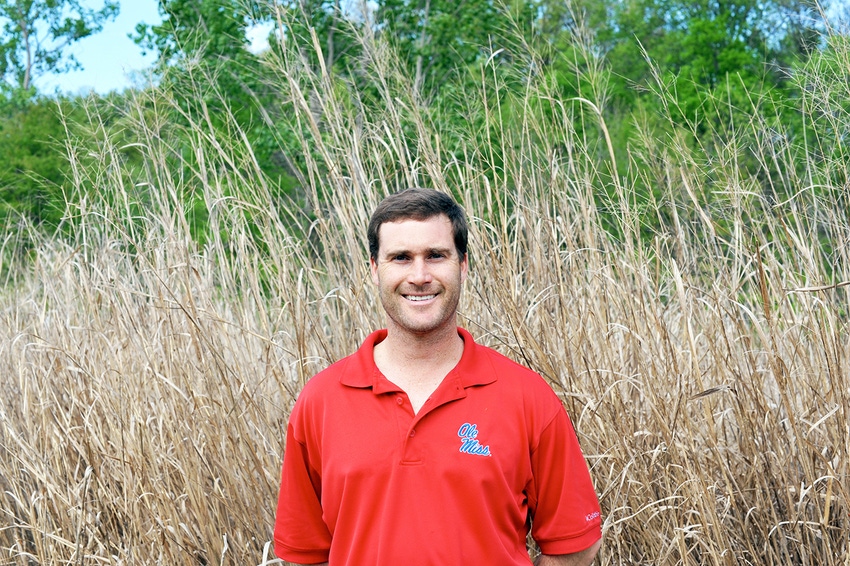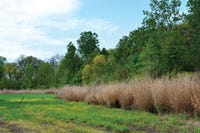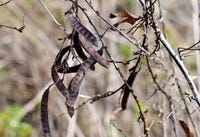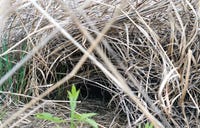June 8, 2015

Scott Flowers has developed a grassy highway system for quail coveys to connect with each other, safely nest, and repopulate, and his system is working.
The Coahoma County, Miss., farmer began quail hunting a little more than a decade ago when a friend gifted him with two bird dogs. Flowers’ grandfather hunted quail, as did his uncle, but when he decided to join their ranks, what he found was a population too depleted to hunt responsibly.
“Quail numbers are down and they’ve been like that for most of my lifetime. It’s been a matter of available habitat since the mid-1980s,” says Flowers. “I enjoyed watching dogs hunt as my grandfather had, and I knew I needed to help build up the quail population for that to be a future possibility.”
Within the last 10 years, Flowers has planted 23 acres of quail habitat over 8,000 acres of farmland. The 120-foot wide grass strips are wrapped around crop fields, and are planted near known quail coveys. “It didn’t hurt our farming operation to put in 23 acres of buffer strips. I don’t feel like I’ve sacrificed economically at all, and I know it has helped the wildlife,” he says.

THE IDEAL QUAIL habitat includes a mix of several land-uses such as wooded areas, row crops, and grassy areas. (Photo by Doreen Muzzi) Click to enlarge
In several areas, Flowers planted the mix into areas previously used as turnrows. “Overall, we probably lost 10 acres of cropland and the other half was turnrow acreage that we haven’t even missed,” he says. “As an added benefit, I do know that I don’t see any soil erosion where I have those buffer strips. And, we have probably increased our water quality with the addition of the buffer strips.”
Flowers put the buffers in the general vicinity of existing coveys of quail. “The land can only hold so many quail, but the more habitat that exists, the more quail can survive,” he says. “They are here and they can repopulate, but the habitat is not there in much of the Delta. If we increase the habitat, the quail population will increase.”
The habitat areas planted on Flowers’ farm are a mix of four grasses including Kobe lespedeza, little bluestem, big bluestem and Indian grass, as well as Partridge pea. The Partridge pea and Kobe lespedeza serve as both food sources and cover for the nesting birds. The grass mix also provides desirable nesting sites 3 to 4 inches off the ground in the grass clumps.
“The species planted have flourished and the grass strips are thriving. It’s a tough crop that really rejuvenates itself,” says Flowers. On good sandy soil, the grass can reach over Flowers’ head, and the partridge pea grows to about 2 to 3 feet tall. Because the grasses are perennials, they come back strong, year after year. The Partridge pea re-seeds itself annually.
To maintain the habitat strips, Flowers burns the grasses down every two to three years during the late winter or early spring. The process rejuvenates the mix of grass crops, and, according to Flowers, “they’ll grow back even better.” The grass mix has been planted alongside soybean, corn, and cotton crops, and it has worked well in each crop production system.

PARTRIDGE PEA is included in the planting mix because it provides habitat area and offers quail an additional food source. (Photo by Doreen Muzzi) Click to enlarge
The grassy habitat established quickly, according to Flowers. “Within a year or two the quail population had increased substantially. Initially, we saw population numbers double in three years, before seeing a slight downturn, possibly due to other environmental conditions. This year, the numbers are up higher than they’ve ever been, and I’ve found a lot of wild quail on our farm this year.”
According to Delta Wildlife’s Executive Director Trey Cooke, nesting is the biggest limiting factor for quail. “Quail like diverse environments, such as those rural areas that include small equipment, livestock, ditch banks, and old fence rows. However, new technology has allowed us to farm across these areas, and this progress moved quail out of the way,” he says.
“The planted field borders are simulating these old edges we’ve cleaned up to farm,” Cooke explains. “The Partridge pea is also a pollinator plant, and these strips offer habitat for pollinators, such as honeybees and butterflies.”
Flowers agrees that a mix of adjacent row crops, mature grasses, and partridge peas, makes for a great habitat for quail.
“I’ve got small areas with very high quail populations that I attribute to a combination of my buffer strips, nearby soybean and corn crops, and adjacent CRP blocks. Quail need that diversity. They need that mix all together. Leaving a little crop out there helps, too,” he says.

THE CLUMPING grasses protect the birds from predators, as well as offering areas for nesting. (Photo by Doreen Muzzi) Click to enlarge
Area deer have also been known to use the refurbished habitat to bed down in and Flowers often finds deer traveling down the grass strips. In addition, the grass strips help provide cover from predators.
To help sustain the building quail populations, Flowers limits his hunting to three or four birds per covey (a covey has anywhere between eight and 20 birds).
“This year, we found three covey of quail in a 200-acre area. Previously, there might have been one covey in that field,” he says.
“We’ve helped get populations back to a huntable level on our farm. If everyone planted grass strips alongside the Delta’s row crops, our quail numbers would certainly go up,” Flowers says.
“The quail are a native species and they were in the area before we put the strips there. They were simply missing the grassy strips needed to connect covey to covey for repopulation.”
You May Also Like




